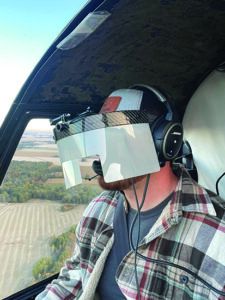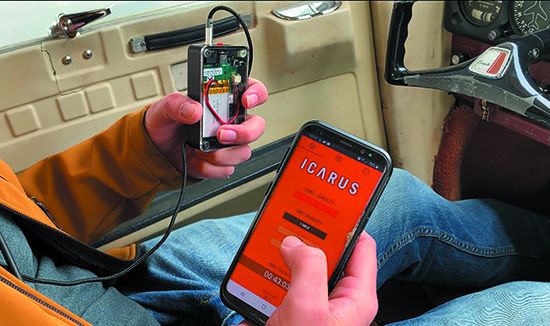Although the Icarus smart VLD has been in development since 2014 (the device is the brainchild of Icarus founder and military helicopter pilot Nick Sinopolo), it’s only been out in the field for a few years. In a training environment that isn’t gentle on gadgets, there’s still a lot to learn and improvements to be made.
The Icarus smart VLD is a unique visor-like device that uses a Polymer Dispersed Liquid Crystal (PDLC) film that changes the wearer’s imagery, which is controlled by the instructor via an external battery-powered control module. There’s also a smartphone app to command the scenario-based IFR training—including gradual changes in visibility, and more realistically mimicking the real IMC environment. When we flew with the first-gen Icarus a few years ago for an Aviation Consumer report, we thought it was smartly designed and had a good app, but wondered how the visor frame would hold up.

You’ll need to wear a ball cap or a sun visor (or flight helmet) so the lightweight device can clip and strap to the brim. It’s pretty utilitarian and simply attaches with GoPro action cam hardware that allows for good adjustment. When the Icarus VLD is not in use, the shield lays flat but remains flexible enough to wrap around the peripherals. But Icarus found that the frame—which has now been replaced by a stronger carbon-fiber one—might get damaged during storage. While the original product was sold in two versions—one for helicopter/helmet ops and the other for typical fixed-wing training—there is now only one design (borrowed from the helicopter version). This simplifies production and lowers costs.
WHICH MARKET?
A sizable investment at $1250, especially for the shoestring budgets of small flight schools, we wondered who would buy the Icarus VLD. Turns out there are a few markets. “To date, our customers have been a mix of military and flight training providers. But there’s been a lot of one-device sales to instrument-rated private fixed-wing airplane owners (and freelance instructors) who see the potential safety benefit of the smart VLD,” Sinopolo told us at the start of the 2023 airshow/tradeshow season.
New Icarus buyers will pay $1250 for the latest-gen VLD, which includes the screen, the controller/battery (the app is free) and storage case, while owners of the first-gen device can get upgrades to the current hardware. Contact Texas-based Icarus at www.icarusdevices.com.





